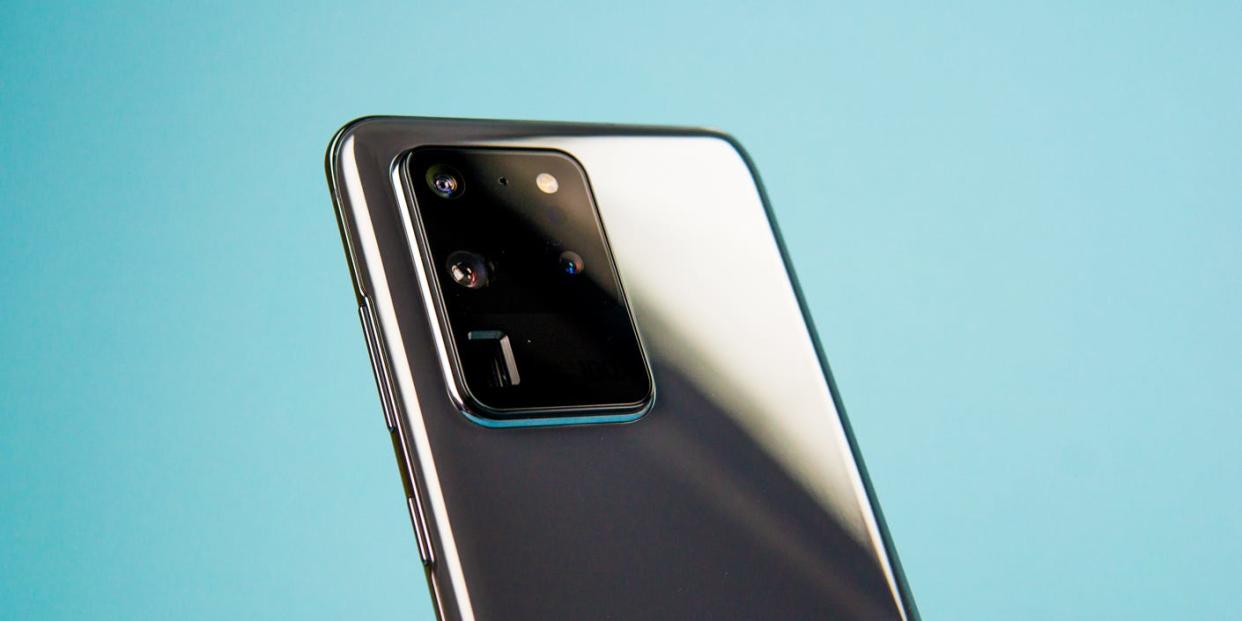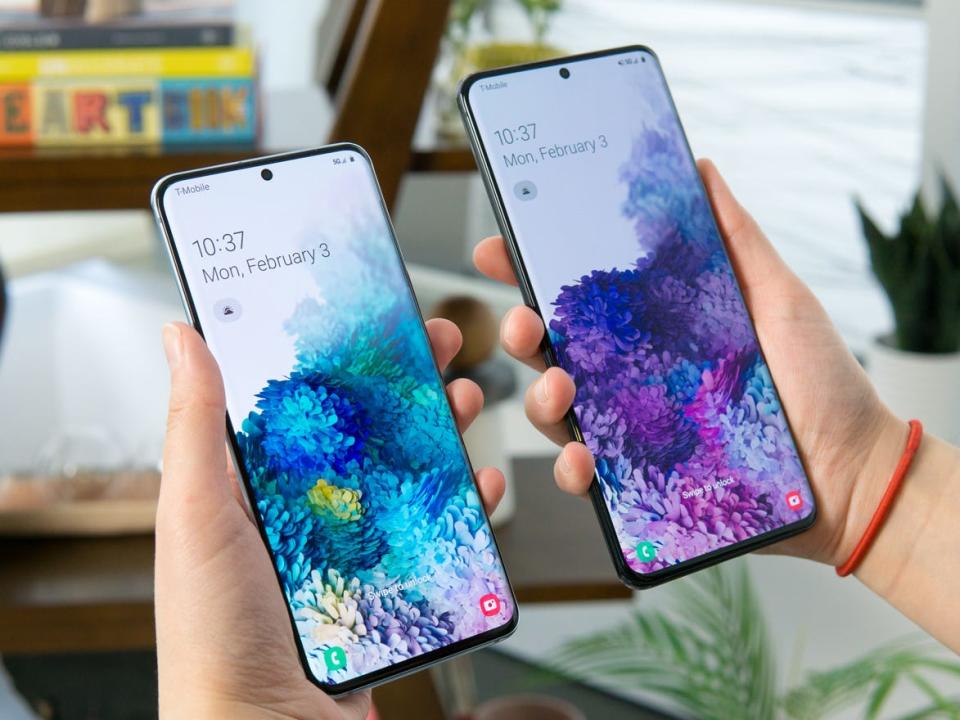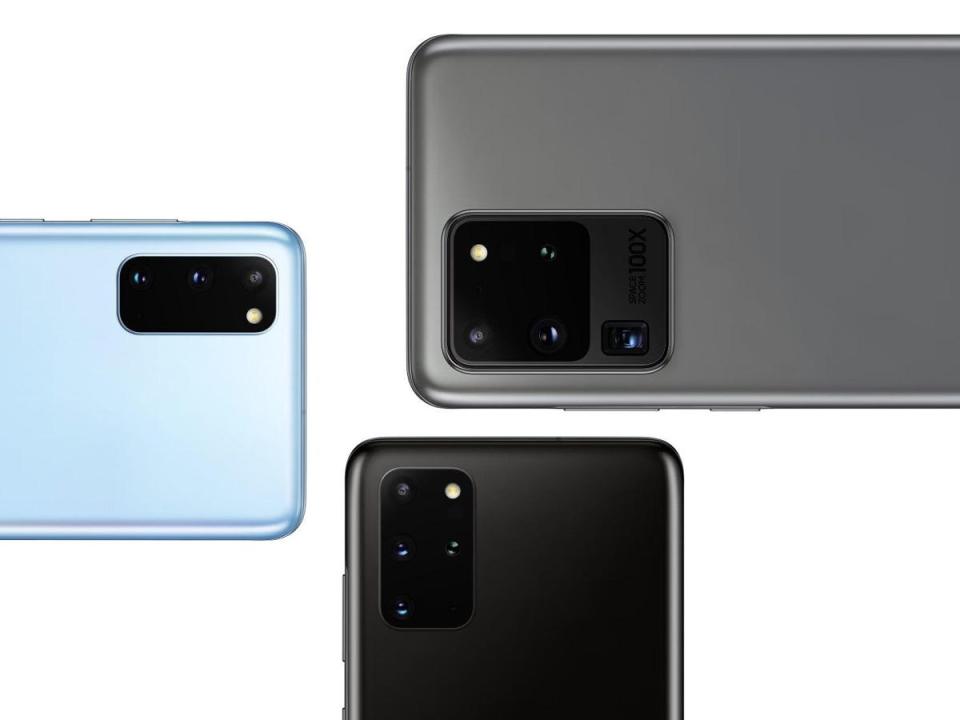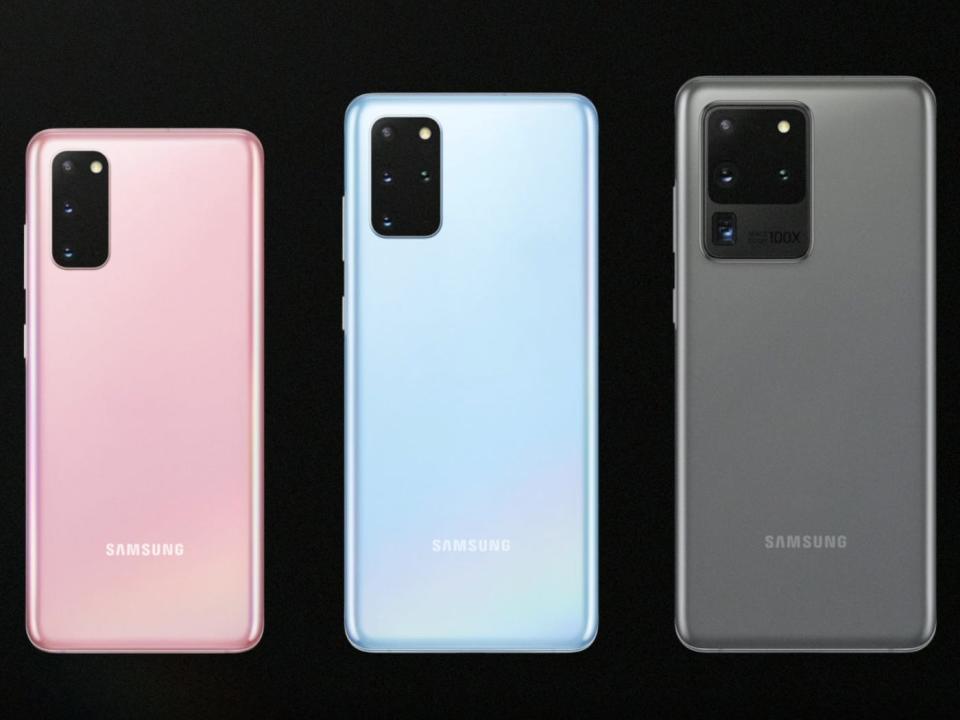These 6 features may make the Samsung Galaxy S20 Ultra worth its incredibly high $1,400 price tag

Antonio Villas-Boas/Business Insider
Samsung's Galaxy S20 Ultra starts at $1,400, which is among the highest price tags we've seen for a smartphone.
There are some obvious reasons that can help explain the Galaxy S20 Ultra's high price tag. It has a larger screen and bigger battery than the regular $1,000 Galaxy S20 and $1,200 Galaxy S20 Plus.
But the main difference in the Galaxy S20 Ultra is its cameras. It comes with a massive 108-megapixel sensor for more detailed shots in any lighting situation. Even the selfie camera goes up to a huge 40 megapixels.
It's also capable of zooming further than any other smartphone, with 10x optical zoom and 100x digital zoom.
Samsung's Galaxy S20 Ultra is an anomaly in the smartphone world.
Starting at $1,400, it's among the most expensive smartphones you can buy. Not even Apple, which is known for giving its iPhones high price tags, has released a phone that starts at $1,400 — the biggest and most expensive iPhone 11 Pro Max starts at $1,100.
So what makes the Galaxy S20 Ultra so expensive?
First, some of the obvious things, like a larger screen.

Antonio Villas-Boas/Business Insider
The Galaxy S20 Ultra has a huge 6.9-inch display compared to the 6.7-inch screen on the S20 Plus, and the 6.2-inch screen on the regular S20.
Despite its $1,400 price tag, you don't get much more than a larger screen. There aren't extra bells and whistles in the S20 Ultra's screen — apart from its size, it's identical to the screens on the regular S20 and S20 Plus.
Because the S20 Ultra has a larger screen, it's a larger phone, which means it has a larger battery, and that could give it an edge on battery life.

Antonio Villas-Boas/Business Insider
It's pretty simple — big phone often means big battery. The Galaxy S20 Ultra has a gigantic 5,000mAh battery, while the Galaxy S20 Plus sports a 4,500mAh battery, and the S20 a 4,000mAh battery.
It's true that battery size isn't everything, and there are some extra factors that can level out the playing field between the new Galaxy S20 phones. For example, the S20 Ultra's large 6.9-inch screen can draw more power than the S20 Plus' 6.7-inch screen, leading to nearly identical battery life on both devices, even if they have differing battery sizes.
Samsung doesn't provide an expected battery life for the different models on its website, and the company declined to make estimates for the phones in an email to Business Insider.
I haven't checked out the Galaxy S20 or S20 Plus yet, so it's impossible to make a comparison. But I can say that the battery life on the Galaxy S20 Ultra has been phenomenal.
The Galaxy S20 Ultra also differentiates itself with an unprecedented 108-megapixel camera versus the 12-megapixel camera on the Galaxy S20 and S20 Ultra.

Samsung
The standard camera on the Galaxy S20 Ultra has a whopping 108-megapixel sensor compared to the 12-megapixel camera in the Galaxy S20 and S20 Plus.
With that said, the S20 Ultra doesn't always take 108-megapixel photos. By default, it compacts those 108 megapixels into 12 megapixels for most well-lit shots. But you do get the option to take 108-megapixel photos whenever you want, which captures more details and lets you crop into a photo while losing less detail than you would with fewer megapixels.
And for low-light shots, the 108 megapixels also combine to absorb more light, making for better low-light shots than cameras with fewer megapixels.
The Galaxy S20 Ultra boasts a zoomed lens with 10x optical zoom and 100x digital zoom.

Antonio Villas-Boas/Business Insider
The Galaxy S20 Ultra's zoomed lens is made up of a prism of mirrors that gives 10x optical zoom, which means it should have little to no loss of detail when you zoom up to 10x. On its own, 10x zoom is impressive when most phones have a maximum of 3x optical zoom.
The special zoomed lens also goes as far as 100x digital zoom. That's impressive, but I wish I could say the same about the quality of the few 100x photos I've taken with the Galaxy S20 Ultra. Super-zoomed photos tend to look blurry and totally undetailed. Rather, you're better off sticking under 100x, where photo quality is a lot better.
Here's a 100x zoomed photo of a building at the top of the ski mountain from the photo above:

The Galaxy S20 Ultra also has a 40-megapixel selfie camera compared to the 10-megapixel camera in the regular S20 and S20 Plus.

Antonio Villas-Boas/Business Insider
Samsung is differentiating the Galaxy S20 with near-excessive camera hardware, and it hasn't forgotten the selfie camera, which has 40 megapixels compared to a more typical eight- or 10-megapixel selfie camera.
This gives you both the option of capturing ultra-detailed selfies, and getting better selfies in low-light conditions.
The Galaxy S20 Ultra also supports the fastest type of 5G network (and so does the Galaxy S20 Plus), while the regular S20 only supports the slower and mid-speed 5G networks.

Antonio Villas-Boas/Business Insider
Only the Galaxy S20 Ultra and the Galaxy S20 Plus support all three types of 5G networks, including the super-fast "mmWave" or "high-band" 5G networks.
The regular Galaxy S20 doesn't connect to the super-fast mmWave 5G networks, and "only" supports the slower low-band and mid-band 5G networks.
Despite all this, you may not even be able to connect to a 5G network with any of the Galaxy S20 phones. 5G networks are rather scant at the moment. At the time of writing, the super-fast mmWave 5G networks on AT&T and Verizon are only available in a few cities in the US. And within those cities, 5G coverage is extremely sparse. You'd be connected to your carrier's 4G LTE network the majority of the time.
T-Mobile currently has the widest-reaching 5G network with the longest range, but the trade-off is that it's the slower low-band 5G network. I've been using the Galaxy S20 Ultra on T-Mobile's 5G network, and I honestly can't tell much of a difference at all.
5G networks will need time to flesh themselves out before you make the most of 5G connectivity on Samsung's latest Galaxy S20 phones.
Apart from these six things above, the Galaxy S20 Ultra is pretty much identical to the regular Galaxy S20 models. It's up to you whether you value these six features at $1,400.

Samsung
The Galaxy S20 Ultra is made up of the same glass and metal as its smaller and cheaper siblings. And the S20 Ultra isn't any more powerful, either — all three phones run on the same specs, including the Qualcomm Snapdragon 865 chip, 12 GB of RAM, and come with the same 128 GB of storage as standard.
While I haven't tried the regular Galaxy S20 or S20 Plus, I estimate that the overall experience will be pretty consistent across all three models, at least on a day-to-day basis when you're running your usual array of apps. I can definitively say that using the Galaxy S20 Ultra on a daily basis for about a week hasn't felt much different than using any other high-end smartphone that costs hundreds less.
I'm not going to tell you how to spend your money, so it's up to you to decide whether these six features that are exclusive to the Galaxy S20 Ultra are worth its $1,400 price tag.
Read the original article on Business Insider

